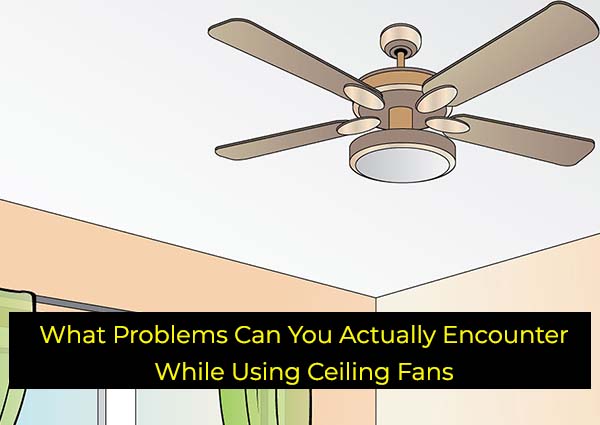What Problems Can You Actually Encounter While Using Ceiling Fans
Is the soaring temperature providing you with sleepless nights? Wondering which fans must you buy? Then, in India you need to shop for high-performance power saving ceiling fans.
In the summer season, the extreme heat as well as humidity can disrupt your peace of mind. The increasing work pressure are often an added disadvantage. Hence in order to maintain your cool and smooth running of errands, comfort is extremely important. High speed ceiling fans are often the best choice to give yourself the needed comfort.
What Exactly Can You Do When Your Ceiling Fans Are Slow?
4 problems can appear in ceiling fans that operate at speeds slower than normal ones. One is that they actually have very little torque and almost any type of issue may cause the fan to run quite slowly.
If a fan is difficult to spin, then you ought to know that there’s an issue with lubrication.
Another inspection that you simply can do is search for damaged winding
Slow fan movement can even indicate that your capacitor is a defective one
How To Keep The Power Consumption Of A Standard Ceiling Fan In Check?
An ordinary ceiling fan in our home contains a rated power of 75W. Now allow us to calculate the amount of energy consumed monthly.
For example, think about using this 75W fan for 12 hours in a day. Which implies the power consumption amounts to (75*12) i.e 900-watt hour. If calculated for the entire 1 month, the ceiling fan alone will consume 27kWh of power. In addition, for a month this equivalently converts to about Rs 270. Therefore, you’ll easily be able to understand that for just a single day turning on a single ceiling fan in your entire room can make you invest about 270 Rs.
Can power saving fans reduce up to 60% of your electricity bill? Yes, it is true. In order to reach the energy usage norms set by the authoritative bodies, these ceiling fans use:-
- efficient motors,
- design blades of superior quality, and
- include LED lighting within the case of decorative ceiling fans to further reduce the watts.
Why Does A Ceiling Fan Make Noise?
The clicking sound that you just hear is because of the blades being tightly assembled to the fan. The entire issue lies with poor manufacturing skills. R
Moreover, brands that are reputed will never serve you a product that has such defects. However, you’ll be able to tighten the blade screws and secure the upper canopy so as to reduce the noise.
In Your Ceiling Fan Does The Blade Angle Matter?
The very first thing you ought to know before buying a fan is that the blade angle shouldn’t be below 12 degrees. Why? Because it’ll be a mere showpiece and will be a full waste of money.
Furthermore, in an ideal case scenario, you’ll want your fan blades to force air upwards or downwards. Now you need to consider your blades are at a low angle, will they actually be able to move the air? No. You need to get a fan with blades angled between 12 and 14 degrees in a room. For more information contact Jagdamba Service or visit our website.

